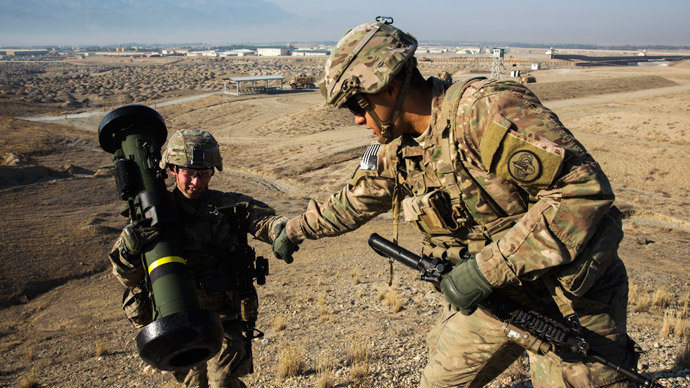Veterans at risk: 6 key elements of suicide-prevention law

US President Barack Obama has signed into law a bill that seeks to improve troop and veteran suicide-prevention programs and create increased awareness around the issue of mental health.
Unanimously passed by Congress, the Clay Hunt Suicide Prevention for American Veterans Act, named for a veteran who took his own life in 2011, will seek to improve suicide awareness and prevention programs among US troops and veterans. Here are the key facts and figures about the bill.
1. Annual third-party evaluations of existing mental health and suicide-prevention programs run by the US Departments of Defense and Veterans Affairs (VA) will consider their effectiveness and to make further recommendations for improvement, elimination or consolidation. As of 2013, the VA estimated that 22 veterans commit suicide each day.
2. A website will provide service members with current information about available mental health care resources. A 2014 survey by the group Iraq and Afghanistan Veterans of America (IAVA) found that more than 73 percent of veteran respondents said they did not believe troops and veterans get the mental health care they need.
.@IAVA's fight to pass #ClayHunt was long. A huge early moment was when we planted 1892 flags on the National Mall: https://t.co/61ASEeMtvZ
— Paul (PJ) Rieckhoff (@PaulRieckhoff) February 12, 2015
3. A loan repayment program will aim to alleviate debts of psychiatry students to encourage them to work for the VA. Overall, the department has been deeply understaffed in the post-9/11 era despite efforts and funding to find mental health-care professionals.
4. A community outreach pilot program will assist service members transitioning away from active duty. The Bureau of Labor Statistics reported last week that for post-9/11 veterans, the unemployment rate went up to 6.9 percent in December. That’s above the unemployment rate for veterans overall -- 4.7 percent -- as well as the national rate of 5.6 percent.
READ MORE:US Special Ops forces committing suicide in record numbers
5. Improved facilitation of training, study, and other resources among the VA and non-profit mental health organizations will seek to boost suicide prevention initiatives. The 2014 IAVA survey found that 40 percent of the group’s members knew an Iraq or Afghanistan veteran who had committed suicide.
6. The law will extend by one year enrollment eligibility in the Veterans Health Administration. As of late January, there were nearly 510,000 veterans disability compensation claims pending a decision, with 242,000 backlogged, or have been waiting a decision for at least 125 days.
#VetsRising#IAVA#Veterans in #DC for #WhiteHouse signing of #ClayHuntSAVActpic.twitter.com/J5pwwLUBwe
— Quan Nguyen (@qmn007) February 12, 2015












